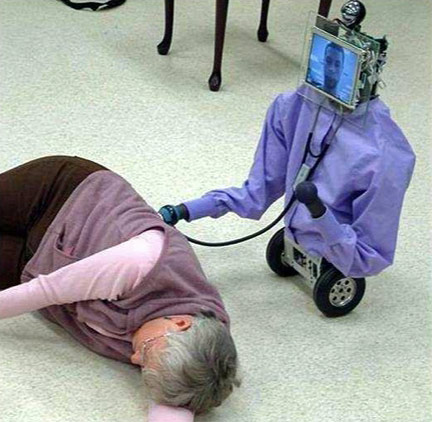Robo doc detects cancer 40% better than humans
Prototype cyber-surgeon faster, more accurate at finding tumours

Would you trust a robot to delve into your innards? If Canadian researchers are right, you should.
A prototype touchy-feely robot has been shown to detect tumour tissue in half the time, and with 40 per cent more accuracy than a human surgeon.
The cybernetic sawbones, developed by the University of Western Ontario, also results in less tissue damage than clumsy old humans.
Touching technology
Oncologists use scanning techniques such as magnetic resonance imaging (MRI) to identify lesions. But tissues may shift during surgery, making it hard to rely on the position identified by the scan. So surgeons also use gentle pressure (palpation) to confirm where atumour is, or to locate further tumours not picked up through scanning.
This can be very tricky in modern, minially invasive surgeries, where the surgeon must attempt to feel for harder, cancerous tissue using long, slim instruments via a very small incision. Enter the robot-controlled palpating device, which applies consistent force and moves over suspect tissue systematically.
Using tactile sensing instruments under robotic control reduces the force applied to the tissue by over a third compared to a human controlling the same instrument. Accuracy in detecting the tumours was also far greater with the robot - between 59 and 90 per cent depending on the robot used.
Get daily insight, inspiration and deals in your inbox
Sign up for breaking news, reviews, opinion, top tech deals, and more.
To develop the prototype robot for use in real surgeries, the researchers plan to upgrade to a flexible rotating head and a remote centre of motion. They would also add an improved interface to help surgeons overcome any fears about using robots in this type of surgery.